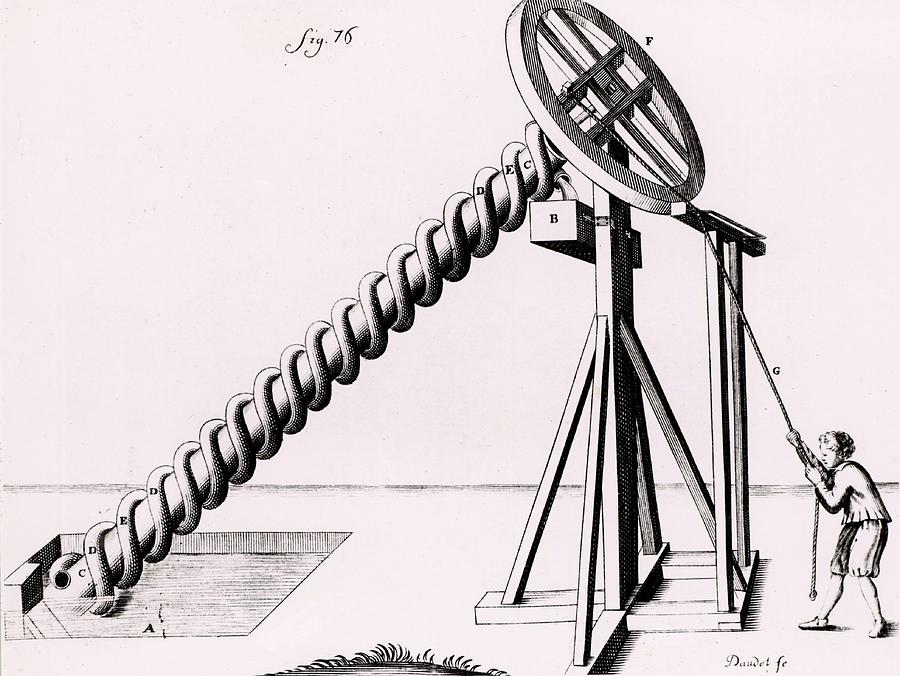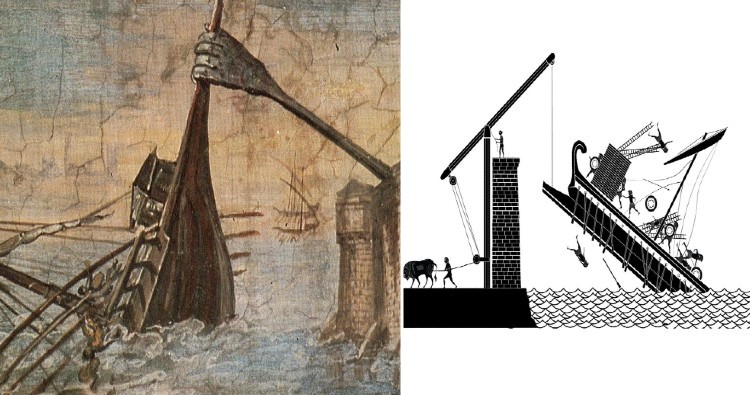
The Archimedes Claw and Experimental Archaeology Speculatively, we can state that he was capable of devising and building such a device, so the next question is whether such a device is practical.

'On Buoyancy' suggests that he was fully aware of the delicate equilibrium that prevented a Roman galley from sinking and the relatively small amount of force needed to capsize one. His work, 'On Levers', showed a sophisticated knowledge of forces and equilibria, and designing the claw with pulleys and a counterweight is theoretically possible with this level of knowledge. To investigate this requires two stages, firstly looking at the work of Archimedes and establishing that he had the mathematical and mechanical knowledge to build such a device, before looking at whether such a war machine would have worked.Įven though Archimedes left no designs for this device, so we cannot be sure that he designed or built one, his expertise in other fields certainly brings it within the realms of possibility. The question is whether this device actually existed and worked or if the later historians embellished the tales. Translation by Ian Scott-Kilvert in Makers of Rome: Nine Lives, Penguin Classics, New York, 1965. Often there would be seen the terrifying spectacle of a ship being lifted clean out of the water into the air and whirled about as it hung there, until every man had been shaken out of the hull and thrown in different direction, after which it would be dashed down empty upon the walls. Parallel Lives: Marcellus At the same time huge beams were run out from the walls so as to project over the Roman ships: some of them were then sunk by great weights dropped from above, while others were seized at the bows by iron claws or by beaks like those of cranes, hauled into the air by means of counterweights until they stood upright upon their sterns, and then allowed to plunge to the bottom, or else they were spun round by means of windlasses situated inside the city and dashed against the steep cliffs and rocks which jutted out under the walls, with great loss of life to the crews. For example, Plutarch wrote: Plutarch (45 CE -120 CE) Others had a claw or grappling hook, which grabbed hold of the rigging or rails of a galley, raising it, shaking it and capsizing it. Plutarch, Polybius and Livy all speak of huge beams that could be swung out over the walls and some of these dropped huge weights, punching holes through the ships and sinking them. The Archimedes Claw is one of the most notorious of his inventions, designed to repel the powerful fleet of Roman galleys from the seaward walls of Syracuse.

With a name like that, it is asking to be built and tested, something that the Mythbusters could not resist! The Archimedes Claw His other alleged idea was using mirrors or polished shields to focus sunlight into a point and set fire to wooden ships, an invention commonly referred to as the Archimedes Death Ray. These include the notorious Archimedes Claw, which used a crane and grappling hook to reach down and grab Roman galleys, eventually capsizing them.

Some of these titanic machines seem to have been stone throwers or large crossbows, but the ancient historians tell of other inventions. In 215 BCE, the Roman navy and army attacked Syracuse and, to help the hard-pressed city folk, Archimedes designed a number of war machines to fight back.


 0 kommentar(er)
0 kommentar(er)
